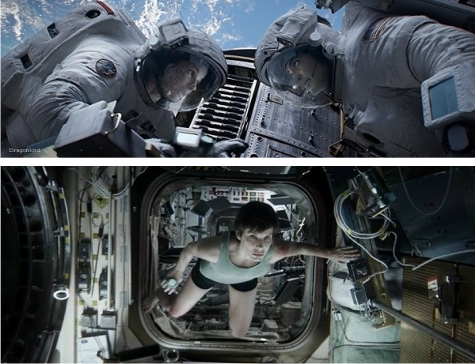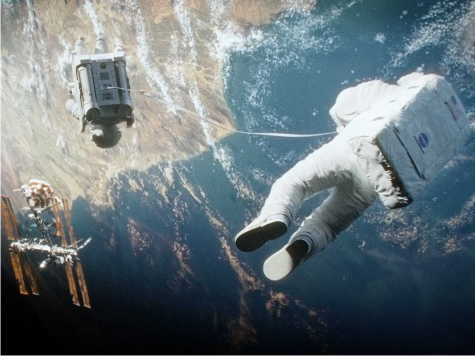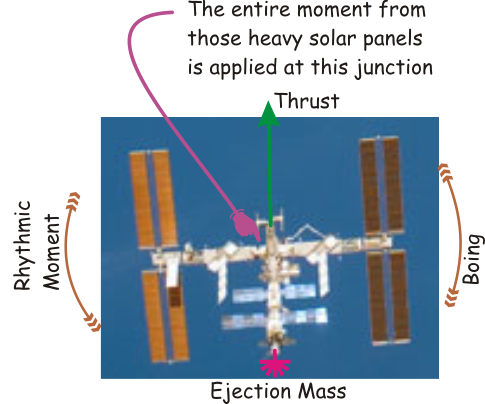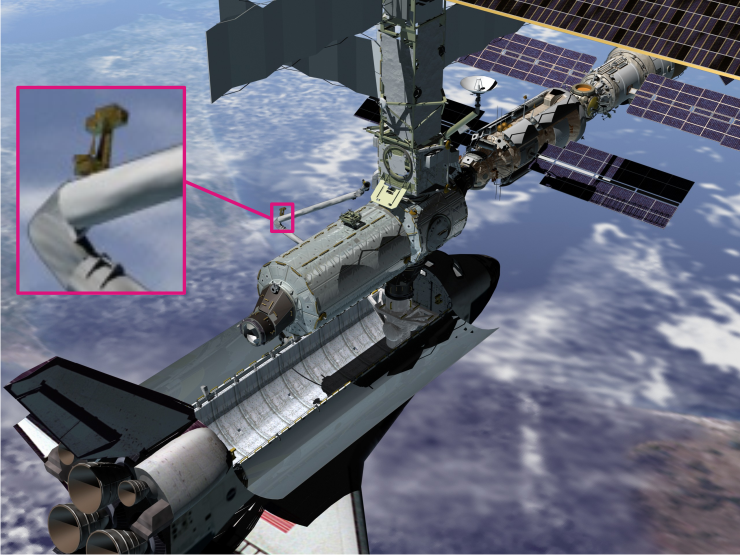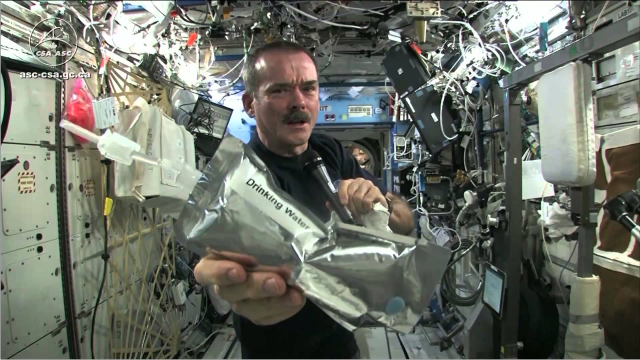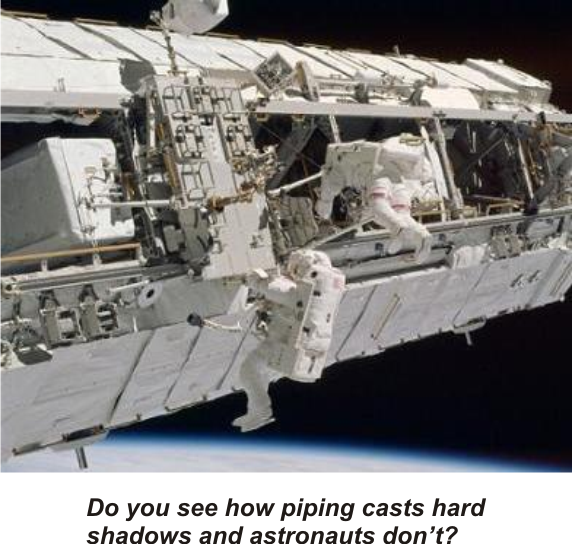
|

|

|
|
Space WalksDisappointing as it was to discover that NASA had papered over the truth with fake photographs of the Earth and moon, still I knew the organization must be fundamentally good-hearted. |
||||||
|
||||||
|
||||||
|
There is a crazy conspiracy theory going around that this was all faked and Clooney is secretly still alive. But seriously, the Hollywood guys do a better job than NASA on a hundredth of the budget. The ISSA great deal is made of the ISS. NASA tells us it's 400 miles up in the thermosphere where the ambient temperature would melt aluminum. But it's ok they say, because the air is thin up there so heat isn't transferred to the ship.It's an improbable rig really. Various countries have built bolt-on modules of different shapes and sizes. Modules have been flown up there on big rockets, flawlessly docked, positioned, and attached until the overall construction is the size of a football field. No identifiable strategy is seen for mechanically damping what is ultimately a huge truss, said to be moving at 28,000 miles per hour. |
||||||
|
Official descriptions tell us that small asteroids, pebbles, space dust and debris are not uncommon in that region of space. The ISS travels twenty times as fast as a bullet, so a pebble would leave clean entry and exit holes without slowing. NASA tells us air is thin at the 400 mile ISS elevation. But if space at that level is not vacuum, there will be some air drag. The space station is not built to be in any way aerodynamic and its great solar panel sails will impact the thin passing air. Apparently this does not cause the ISS to tumble. At 28,000 miles per hour, a thin atmosphere will etch the surface away to lace. The atmosphere is not dense enough to filter UVA and UVB rays from the sun, so any plastic exposed to the sun will turn to dust in days or hours. The vacuum of space is caustic and any material with a positive vapor pressure will be leached away. This would include lubricants, sealants, white metal and paint. Without a protective atmosphere, the sun heats lit surfaces to oven temperature, while shaded surfaces helplessly radiate their heat to the black and get cold enough to freeze mercury. As the space station is heated and cooled from different sides with the shifting sun angle, metal expands and contracts against every mating surface. After 24 hours in space, every metal surface will buckle and not a single seal will remain viable. Let's consider the engineering problems in keeping the space station up there. Even minimal air drag will cause orbital decay, so frequent rocket boosts will be necessary. If the orbit has decayed and we have to apply a rocket boost, we will need to spew a large amount of ejection mass in the other direction. We can't mine space to get the stuff so we will have to send up a large fully charged rocket from time to time. A large amount of tedious math implies that this is not even possible, so we have to use NASA's trick of saying it just happened somehow. it is necessary to apply the thrust at the exact center of mass. A tiny deviation would introduce a rotational component and the station would start to tumble. The exact center of mass with respect to the acceleration vector depends on the orientation of a large semi-random object. So it would be necessary to -exactly- control the orientation of the object. |
||||||
|
||||||
| Engineers in the crowd may enjoy contemplating the moment forces on the indicated junction above. What level of certitude would you require to risk your reputation and your engineer's stamp and certify that junction for a modest 0.1G? How would it have to be designed? What strategy would you use to absolutely ensure correct orientation to four decimal places? | ||||||
|
So the whole structure is going boyoyoyng and we keep our orientation exact and nothing breaks. And we dock rockets up there all the time and we always hit the exact center of mass and we never bump it and vibration wouldn't hurt it anyway. Besides it's really easy because we're going 28,000 miles per hour. What could possibly go wrong?
The engineering problems of the ISS are not trivial. Fortunately the gnarliest problems seem to be easily solved by the mathematically unassailable technique of arm-waving. Inasmuch as it is a given that orbital mechanics are not possible around a flat stationary Earth, the back story is of only passing interest, but so many people seem to believe in the ISS we may need to say more. NASA broadcasts from the ISS all the time and people give TV interviews from there. You see that light up there, that's the ISS. Ok, cool. Spaceships dock gently like a ferry without shaking anything. No gratuitous resonances in the structure. No amplification as the impact wave moves toward the tips. Wow, those NASA guys sure have it all figured out! Maybe we're getting something for that sixty million a day budget after all. |
||||||
|
||||||
|
Computer generated imagery (CGI) has a different quality to the light. The inside of the shuttle's cargo bay has telltale linear falloff that doesn't happen in real photographs. No light scatter, radiosity or internal reflections. It's a rendering.
As in prior cases, they could easily have used a real photograph if they were up there to take one. Perhaps a carefully generated expensive rendering is much easier than leaning over and aiming a camera. Yes that's it! Everybody knows that astronauts are much too busy to aim cameras. |
||||||
|
||||||
|
You may notice that the hatch behind him is open. Actors on the ISS never bother to close hatches, even though they are in a dangerous environment and a single errant boulder could depressurize the entire complex. Ask a submariner about bulkhead protocols. One door left ajar gets you a court martial. ISS videos often show green screen artifacts like twinkling hair and harness bumps. I am apparently not alone in noticing. A google on ISS Hoax will get more videos than you can watch in a year. "Live" shots of the Earth below are usually indistinct and heavily clouded so the Earth beneath cannot be seen at all. Live shots show dense opaque planet-choking clouds when skies are glassy clear below. The famous "Extra Lameness" award is given for a cloud layer that scrolls by unmoving like an arcade game background. |
||||||
|
||||||
|
Then what is that light in the sky? You tell me. Maybe it's a high altitude plane with a high tech searchlight. Is it a football field sized tinkertoy orbiting 400 miles up at 28,000 miles per hour? Definitely not. Everything they say about the ISS is silly, kinda silly or very silly. Yet people believe it all so literally with a fervency rarely encountered in religious zealots. People invent justifications to make the whole NASA story true. We want to believe! But NASA is an entertainment agency, like Disney. We looked at the Earth pictures. I guess they were sorta entertaining. The moon landing story had stronger character development and the deep angst of the dramatic protagonist. They even blew a few guys up to add spice to the story. The space station? Well kinda like a sequel of a sequel, they've lost the dramatic edge. Their other stories? Yes we can prove that the Rover is not on Mars, and that Voyager didn't go beyond the edge of the galaxy, turn intelligent and come back to be foiled by Captain Kirk. Speaking of Roddenberry, do you remember the planet where thoughts came to life? One guy was describing WW2 aircraft and strafing runs to his girl when one flew over strafing. Kirk thought of his old frenemy Finian, so the plot had an excuse for a fist fight. They all almost died, then somebody explained that an AI read their thoughts and fancy projection machinery made it all possible. Yet does this plot line not describe our world? The world around mirrors our preconceptions and our attitudes. We create without awareness as the demiurge does the heavy lifting. Where we see strife, we have that. Where we see harmony we have that. Attitude is an extremely strong factor in healing. Allopaths will need a career of unlearning to begin to grasp this but holistic practitioners will assure you that it is true. Those who dismiss the Law of Attraction as woo-woo, unwittingly create a mechanistic world anchored in tick-tock time. We create what we believe. And NASA shapes what we believe. A dozen new stories every week glorify the chronicles of space. We hear about stars being born, and monster black holes eating galaxies. Habitable planets are found, mere hundreds of light years away. We have dark matter, radio galaxies, wild nebulae, and fantastic photographs of Pluto. And wouldn't you know it, Einstein's Theory of Relativity has been confirmed yet again! Whatever comes down the NASA channel is mirrored, cross-posted, shared and re-tweeted all over the net as absolute fact. All news channels carry it and have designated "smart" talking heads to discuss it. Naked Op-Ed, and it's everywhere. If you're new to this, you think some of those articles make sense, but the more you look into it, the more you find you can just dismiss as nonsense all the stories with a space meme. But you will lose half of the news. It gets worse. The more you apply your critical eye to the remaining news, the more you will see it's all invented. But that's for a future chapter. |

|
|
|
|
|
|
|
|
|
